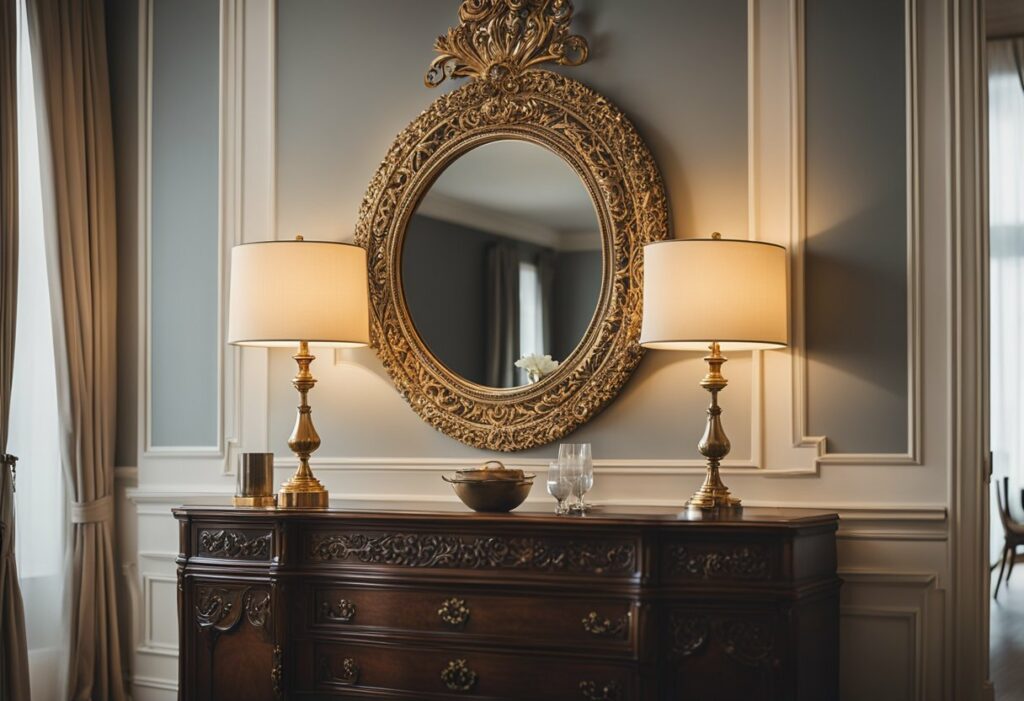Mirror in Dining Room Interior Design: Adding Elegance and Depth to Your Space
Are you looking to refresh your dining room decor? If so, have you considered adding a mirror to the design? Mirrors can be a great way to add both style and functionality to a dining room. Not only do they create the illusion of more space, but they can also reflect light and make the room feel brighter and more inviting. In this article, we’ll explore how to incorporate mirrors into your dining room design for maximum impact.
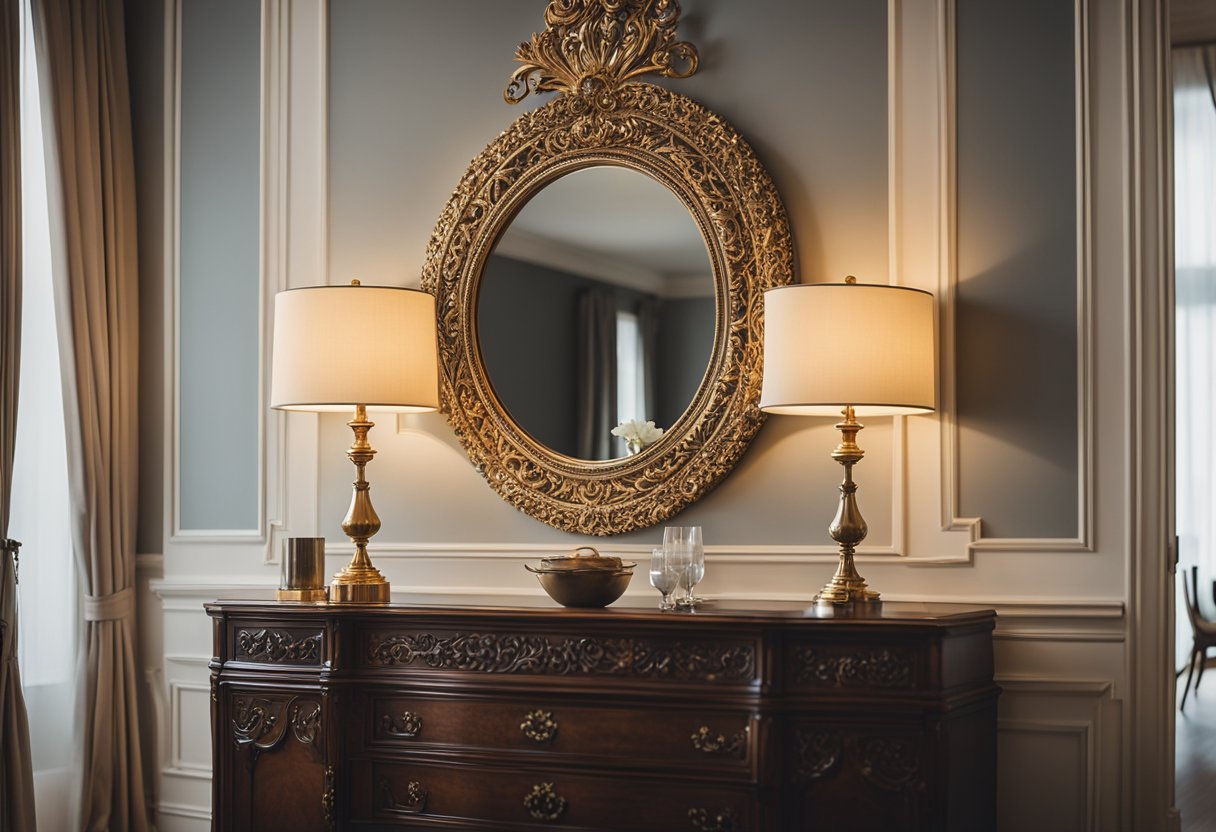
Designing with mirrors in dining rooms can be a lot of fun. There are a variety of styles and shapes to choose from, so you can easily find one that fits your personal taste and the overall aesthetic of your home. Whether you prefer a classic round mirror or a more modern geometric design, there’s something for everyone. You can even get creative and use multiple mirrors to create a gallery wall or a statement piece.
If you’re working with a small dining room, mirrors can be especially useful. By reflecting light and creating the illusion of more space, they can make your room feel larger and more open. Additionally, mirrors can be strategically placed to draw the eye towards certain areas of the room, such as a beautiful centerpiece or a piece of artwork. With a little bit of planning and creativity, you can use mirrors to transform your dining room into a stylish and functional space.
Key Takeaways
- Mirrors can add both style and functionality to a dining room.
- There are a variety of mirror styles and shapes to choose from.
- Mirrors can create the illusion of more space and draw attention to certain areas of the room.
Designing with Mirrors in Dining Rooms
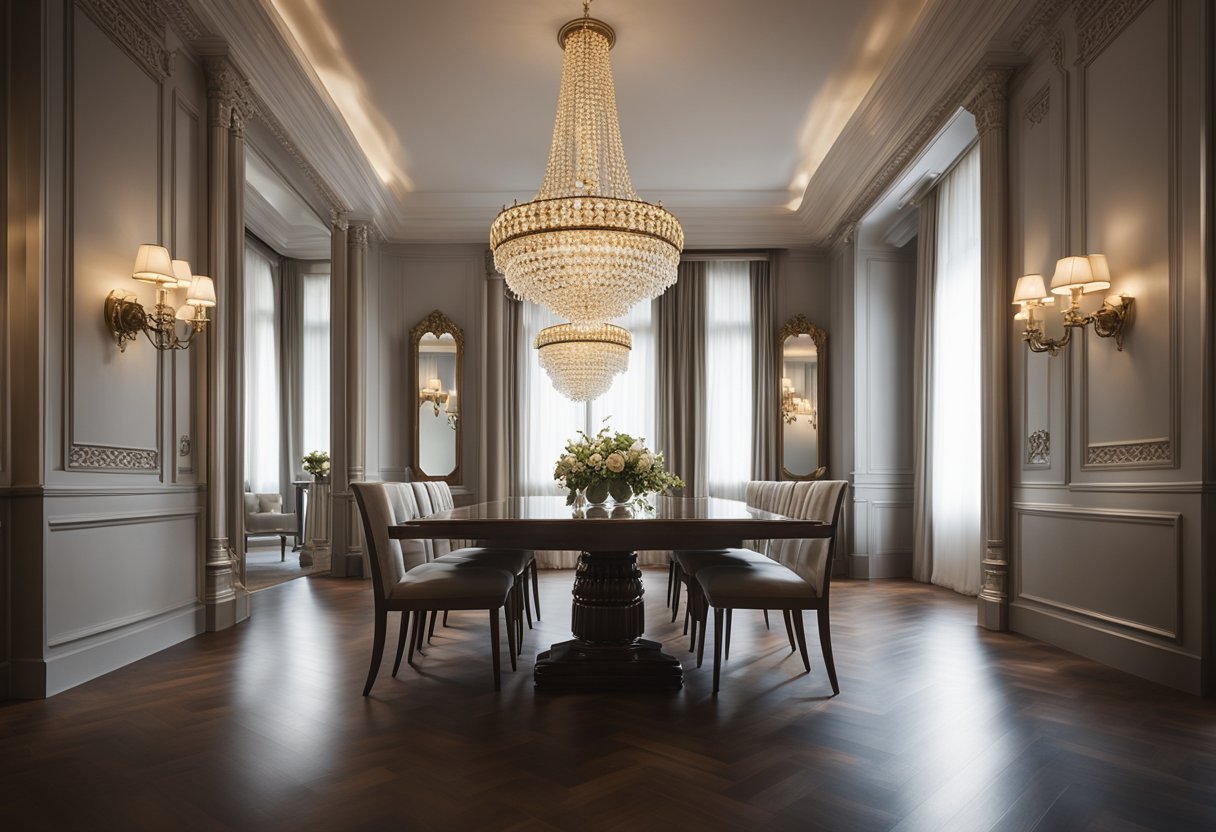
Mirrors can be a powerful tool in dining room interior design, adding depth and visual interest to the space. Here are some tips on how to use mirrors effectively in your dining room decor.
Selecting the Perfect Mirror
When choosing a mirror for your dining room, consider the style of your space. A minimalist dining room may benefit from a large, simple mirror, while a more ornate dining room may require a statement mirror with a decorative frame. Rectangular mirrors are a classic choice, but round or oval mirrors can add a touch of character and flair. Consider the size of the mirror as well – a large mirror can serve as a focal point, while smaller mirrors can be used as accent pieces.
Mirror Placement and Sizing
The placement and sizing of your dining room mirror can have a significant impact on the overall aesthetic of the space. Hanging a mirror on the wall opposite a window can reflect natural light back into the room, making it appear brighter and more spacious. A gallery wall of smaller mirrors can create a unique and eye-catching feature, while a single large mirror can add depth and balance to the room. When hanging a mirror, be sure to position it at eye level and consider the surrounding furniture and decor.
Incorporating Mirrors into Different Styles
Mirrors can be incorporated into a variety of dining room styles, from contemporary to rustic to mid-century. A framed mirror with clean lines can complement a modern dining room, while an ornate mirror can add a touch of luxury to a more traditional space. Mirrored furniture, such as a mirrored buffet or console table, can enhance the overall aesthetic of the room while also serving a functional purpose. Consider pairing your mirror with other decorative elements, such as a chandelier or sconces, to create a cohesive and aesthetically pleasing look.
In summary, mirrors can be a versatile and effective tool in dining room interior design. By selecting the perfect mirror, considering placement and sizing, and incorporating mirrors into different styles, you can enhance your dining room decor and create a space that is both functional and visually appealing.
Maximising Space and Light
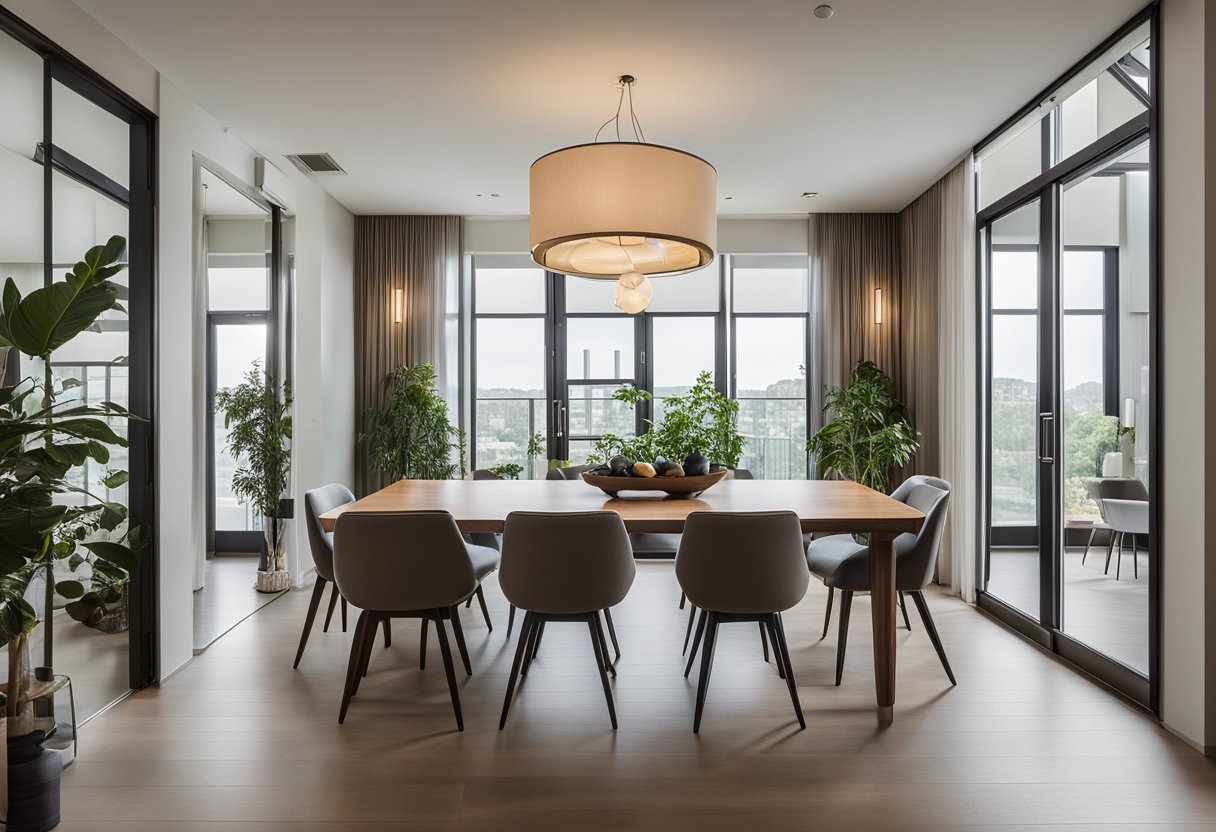
A dining room is a place where you gather with family and friends to enjoy meals and create memories. However, if you have a small dining room, it can be challenging to create a comfortable and inviting space. Fortunately, there are ways to maximise space and light in your dining room to make it feel more spacious and welcoming.
Creating the Illusion of Space
One way to create the illusion of space in a small dining room is by using mirrors. Mirrors can visually increase the size of a room by reflecting light and creating depth. You can hang a full-length mirror on one of the walls or create a gallery wall of smaller mirrors to create a focal point. An antique mirror can add an opulent touch to your dining room decor.
Another way to create the illusion of space is by using a piece of artwork or a view to draw the eye towards the back of the room. This will make the room feel larger and more spacious. Additionally, you can use light colours on the walls and furniture to make the room feel brighter and more open.
Enhancing Natural and Artificial Light
Natural light is essential in any dining room as it creates a warm and inviting atmosphere. If your dining room has windows, you can enhance the natural light by using light-coloured curtains or blinds that allow light to filter through. You can also position a mirror opposite a window to reflect the natural light and create a brighter space.
If your dining room lacks natural light, you can use artificial light to create a warm and inviting atmosphere. You can install a light fixture above the dining table or use sconces on the walls to create a cosy ambiance. Candles can also add warmth and create a romantic atmosphere.
In conclusion, maximising space and light in your dining room is essential to create a comfortable and inviting space. By using mirrors, light colours, and artificial light, you can make your small dining room feel more spacious and welcoming.
Frequently Asked Questions
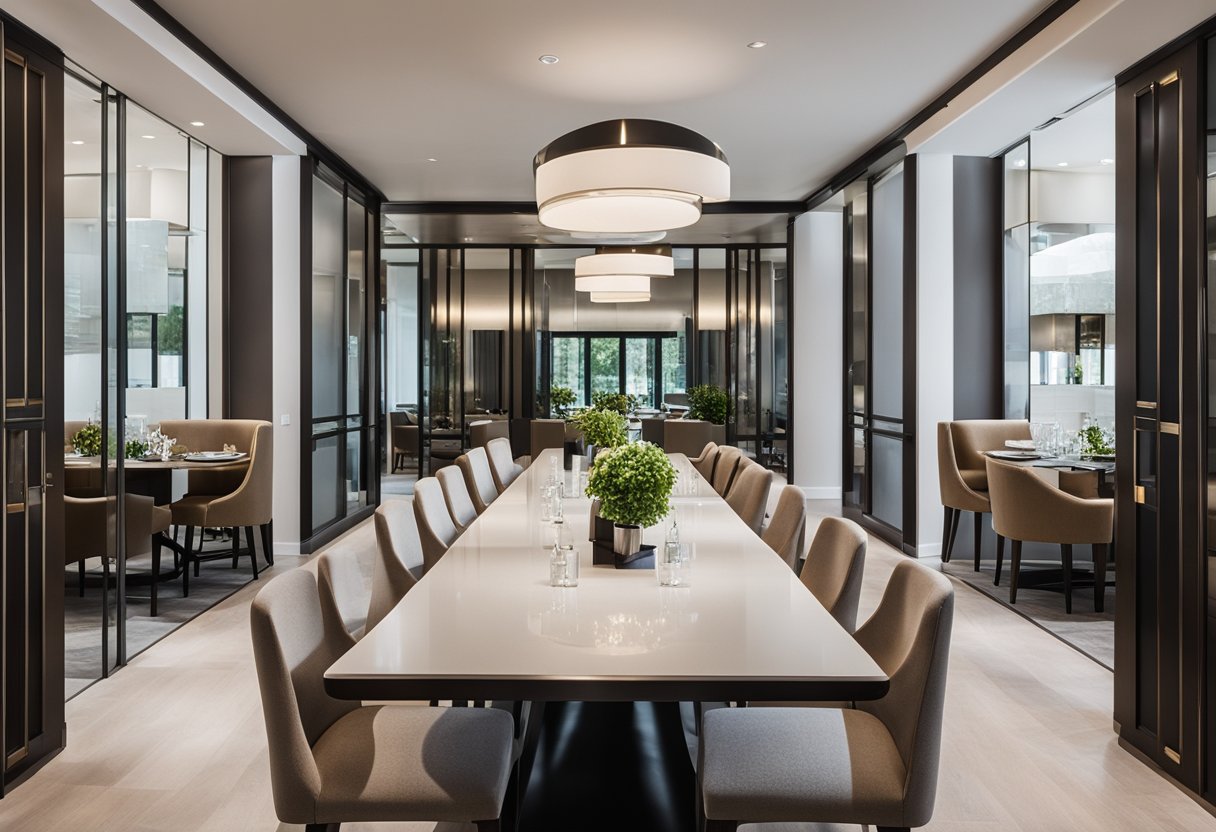
How can a wall mirror enhance the ambiance of your dining room?
Mirrors can add depth and dimension to your dining room, making it appear more spacious and brighter. They can also reflect natural light and create an illusion of space, making your dining room appear larger than it is. When properly positioned, mirrors can also amplify the ambiance and style of your dining room, creating a more inviting and enjoyable space for you and your guests.
What are the latest trends for incorporating modern mirrors in dining room decor?
Modern mirrors come in a variety of shapes, sizes, and styles, making it easy to find one that complements your dining room’s decor. Some popular trends include using large, statement mirrors as a focal point, incorporating mirrors with unique shapes or frames, and creating a gallery wall of smaller mirrors for a more eclectic look.
Which types of wood frames complement mirrors in a traditional dining room setting?
For a traditional dining room setting, consider using wood frames with a classic, elegant design. Mahogany, cherry, and walnut are popular choices that can add warmth and sophistication to your dining room. Ornate frames with intricate carvings can also be a great option for adding a touch of luxury to your dining room decor.
What are some clever ways to position a small mirror in a compact dining room?
In a compact dining room, a small mirror can be used to create the illusion of more space. Consider positioning the mirror opposite a window or light source to reflect natural light and make the room appear brighter and more spacious. You can also position the mirror behind a piece of furniture or artwork to create a sense of depth and dimension.
How does the placement of a mirror according to Vastu principles affect the dining room’s energy?
According to Vastu principles, mirrors should be placed in the dining room to reflect the food on the table, as this is believed to enhance the positive energy in the room. Mirrors should not be placed opposite the main entrance or facing the bedroom, as this is believed to create negative energy.
Can you suggest Feng Shui tips for positioning a mirror in the dining room to boost positivity?
According to Feng Shui principles, mirrors should be positioned to reflect the dining table, as this is believed to enhance abundance and prosperity. Mirrors should not be placed opposite the main entrance or facing the kitchen, as this is believed to create negative energy. Additionally, mirrors should be kept clean and free of cracks, as this is believed to attract positive energy and abundance.

